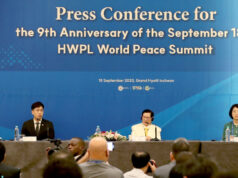Adnan Aamir
An oft-repeated cliché about Balochistan, which is repeated in every article about the province, is that it is the most backward province of Pakistan. This is not simply rhetoric or an emotional claim, but a reality and the people of Balochistan would support this claim. This November, reports on poverty and girls education were released by the World Bank and Human Rights Watch (HRW) respectively, which highlighted yet again the backwardness of this province.
The World Bank released its latest report titled When Water Becomes a Hazard – A Diagnostic Report on The State of Water Supply, Sanitation and Poverty in Pakistan and Its Impact on Child Stunting. It reveals that poverty has significantly reduced in Pakistan, but not much in Balochistan.
It remains the poorest province of Pakistan, with a poverty headcount of 57 percent. The report also reveals that the vast majority of the 40 poorest districts of the country are in Balochistan. Washuk district in Balochistan is the poorest district in the country with poverty headcount of 72.5 percent. Likewise, not a single district from Balochistan, even the capital Quetta, is among the 40 richest districts in the country.
Moreover, the report also reveals that drainage infrastructure is virtually non-existent in Balochistan. About 82 percent of the population is not connected to any drainage system, which results in the generation of stagnant sewage pools in villages and towns. This report also explores the gravity of the nutrition issue in Balochistan. 53 percent of the children in Balochistan are stunted not to mention, which is highest in the country.
The government of Balochistan practically has no strategy for poverty reduction
Moreover, in November HRW also released its report on girl’s education titled Shall I Feed My Daughter, or Educate Her? Barriers to Girls’ Education in Pakistan. This report also exposes the problem of female illiteracy in Balochistan. According to the report, Balochistan has the lowest percentage of educated women in the country. About 81 percent of the women in Balochistan have not completed primary schooling. About 75 percent of women in Balochistan have never attended school. These facts speak volumes about the problem of illiteracy in Balochistan.
Both of these reports delve in great detail about poverty and girls education in Balochistan. However, both of these reports fall short of pinpointing the socio-political reasons which have led Balochistan to this current situation.
We must explore the underlying causes which have exacerbated poverty and female illiteracy in Balochistan.
The first reason is very simple. The government of Balochistan practically has no strategy for poverty reduction. Despite having a plethora of government departments and a large number of public employees, rulers in Balochistan have never thought about developing a full-fledged poverty reduction strategy. Therefore, except a few NGOs, there is no major effort on the part of the government to control poverty.
Zahid Mengal is the executive director of Azat Foundation, which works on poverty alleviation. He agrees that no poverty reduction strategy exists in the books of the government of Balochistan. “Not a single program or initiative of the [Balochistan] government is aimed at poverty reduction,” he told The Friday Times. He said that since the inception of Balochistan as a province in 1970, successive governments had employed conventional development approaches, which can’t take on the myriad problems the province faces.
Another reason for rampant poverty in Balochistan is poor governance, corruption and improper utilization of financial resources of the province. Balochistan was never known for good governance. It has always been ruled for the benefit of the ruling elite at the expense of the people. The patronage-based political system is devoid of any mechanism for accountability. All the elected representatives get in power to make money and solving problems of the people are always afterthoughts. The self-centric leaders of Balochistan have never given much thought to reducing poverty and this attitude persists even in the so-called Naya (new) Balochistan.
Moreover, the third major cause of socio-economic plight in Balochistan is the politically-motivated Public Sector Development Program (PSDP). The annual development plan of Balochistan is called PSDP and it comprises of the development budget of the province. It roughly makes up one-fourth of the total every year. The PSDP is all that the government has to develop the province. However, it is prepared every year to serve the interests of the government MPAs. There is no regard given to feasibility and effectiveness of the projects. The PSDP is dominated by projects which serve political leaders or their cronies. Hence, there is no effective investment by the government to reduce poverty because PSDP is used as a political bribe.
After highlighting the problem of poverty and its causes, it is obligatory to also suggest practical solutions. The first thing that the government must do is to increase its financial resources so that it can have a greater cushion to spend on poverty alleviation programs. The most practical way of increasing revenue is to ask for a proper interpretation of the 7th NFC Award.
As per 7th NFC Award, 10.3 percent of resources are divided among provinces based on poverty and backwardness. Balochistan should get the majority of these resources because its poverty levels surpass other provinces.
But, this did not happen. The financial wizards in the federal government have manipulated poverty figures in NFC calculations in such a way that Balochistan and the Punjab have similar poverty levels. Consequently, the poverty and backwardness factor of 7th NFC Award, which was added to compensate Balochistan, has been neutralized by manipulation of poverty figures. Hence, Balochistan government should vehemently fight for correction of poverty figures so that it can get an additional amount of Rs32 billion every year.
Apart from federal transfers received through the NFC Award, Balochistan should also increase its revenue generation capacity. After the 18th Amendment, provinces can collect sales tax on services. Balochistan established Balochistan Revenue Authority (BRA) to collect these taxes. In the last fiscal year, BRA collected roughly Rs7 billion but that is not enough given the financial capacity and growing needs of the province. “Government should immediately initiate steps to raise the tax collecting capacity of BRA,” said Mahfooz Ali Khan, former finance secretary of Balochistan. He believes that the BRA is the best way for the province to generate additional revenue in the short term.
Once the government has the additional financial resources, the next stage would be about developing focused strategies for poverty reduction. The government needs to collect accurate figures about poverty in Balochistan. Reports of the World Bank and other intuitions are based on small samples and do not reflect the real magnitude of the problem. Mengal suggests that the government should conduct first hand multiple assessments or baseline studies.
In the next stage, the government needs to identify areas which need attention the most. “The Balochistan government can start skills development programs, provide interest-free loans and health insurances to poor segments of the society,” advised Mengal.
To address the issue of female illiteracy, the best way can be to provide cash transfers to underprivileged people on the condition that they will send their children, especially girls, to schools. This experiment worked really well in Brazil and can also be tried in Balochistan.
Mahfooz Ali Khan, who articulately pleaded the case of Balochistan in 7th NFC Award, suggests that Balochistan government should focus on mineral projects of the province to get revenue.
“Gas fields in Dera Bugti and Saindak copper gold project in Chagai generate huge revenues and government should utilize the CSR funds of these projects on poverty alleviation,” he told The Friday Times. “Even if 10 percent revenues of mineral projects are used on CSR then that can be used to change fortunes of people of the host districts of those projects.”
He continued, “Saindak [copper-gold project] alone has CSR funds of Rs600 million annually and rather than transferring this amount to the provincial exchequer, it should be used on health and education of underprivileged people of Chagai district, where Saindak is based.”
Moreover, the government needs to bring the affairs of PSDP in order. At the moment the throw forward of PSDP is Rs400 billion, which is the total value of the PSDP. The cash-starved province does not have the required resources to complete these projects.
Therefore, there is a dire need to revise the PSDP. All projects included in the PSDP to serve the interests of powerful politicians must be eliminated at once. Chief Minister Jam Kamal has made claims to this end but those claims have not been implemented so far. If the Balochistan government wants to do something about poverty, then it must revise its approach towards the PSDP.
All the aforementioned solutions are not hard to implement but they require great political resolve. Anyone who leads such an effort has to fight an army of self-serving politicians, crooked bureaucrats and a strong system of patronage where development funds are used to reward cronies. If Balochistan really has to be taken out of poverty, then bold politicians have to take tough decisions. In the current circumstances, this can be wishful thinking but it is the only way out.
Originally published in The Friday Times
Share your comments!








